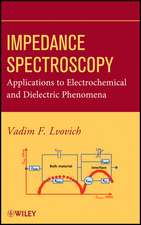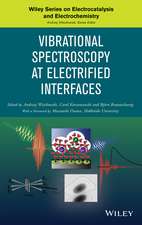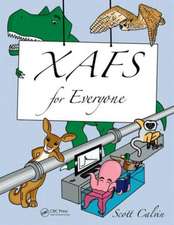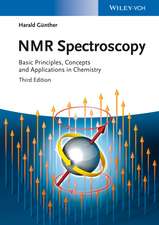Telescopes and Techniques: Undergraduate Lecture Notes in Physics
Autor C. R. Kitchinen Limba Engleză Paperback – 20 oct 2012
This book guides the reader through the mathematics, physics and practical techniques needed to use telescopes (from small amateur models to the larger instruments installed in many colleges) and to observe objects in the sky. Mathematics to around Advanced Placement standard (US) or A level (UK) is assumed, although High School Diploma (US) or GCSE-level (UK) mathematics plus some basic trigonometry will suffice most of the time. Most of the physics and engineering involved is described fully and requires no prior knowledge or experience.
This is a ‘how to’ book that provides the knowledge and background required to understand how and why telescopes work. Equipped with the techniques discussed in this book, the observer will be able to operate with confidence his or her telescope and to optimize its performance for a particular purpose. In principle the observer could calculate his or her own predictions of planetary positions (ephemerides), but more realistically the observer will be able to understand the published data lists properly instead of just treating them as ‘recipes.’ When the observer has obtained measurements, he/she will be able to analyze them in a scientific manner and to understand the significance and meaning of the results.
“Telescopes and Techniques, 3rd Edition” fills a niche at the start of an undergraduate astronomer’s university studies, as shown by it having been widely adopted as a set textbook. This third edition is now needed to update its material with the many new observing developments and study areas that have comeinto prominence since it was published. The book concentrates on the knowledge needed to understand how small(ish) optical telescopes function, their main designs and how to set them up, plus introducing the reader to the many ways in which objects in the sky change their positions and how they may be observed. Both visual and electronic imaging techniques are covered, together with an introduction to how data (measurements) should be processed and analyzed. A simple introduction to radio telescopes is also included. Brief coverage of the most advanced topics of photometry and spectroscopy are included, but mainly to enable the reader to see some of the developments possible from the basic observing techniques covered in the main parts of the book.
Din seria Undergraduate Lecture Notes in Physics
- 17%
 Preț: 362.11 lei
Preț: 362.11 lei -
 Preț: 398.45 lei
Preț: 398.45 lei -
 Preț: 265.30 lei
Preț: 265.30 lei - 15%
 Preț: 478.05 lei
Preț: 478.05 lei -
 Preț: 371.85 lei
Preț: 371.85 lei - 17%
 Preț: 364.52 lei
Preț: 364.52 lei - 15%
 Preț: 620.25 lei
Preț: 620.25 lei - 17%
 Preț: 363.03 lei
Preț: 363.03 lei - 17%
 Preț: 427.77 lei
Preț: 427.77 lei -
 Preț: 493.12 lei
Preț: 493.12 lei - 18%
 Preț: 789.98 lei
Preț: 789.98 lei -
 Preț: 385.10 lei
Preț: 385.10 lei -
 Preț: 398.12 lei
Preț: 398.12 lei -
 Preț: 401.24 lei
Preț: 401.24 lei - 13%
 Preț: 358.33 lei
Preț: 358.33 lei - 17%
 Preț: 429.08 lei
Preț: 429.08 lei - 17%
 Preț: 362.93 lei
Preț: 362.93 lei -
 Preț: 472.29 lei
Preț: 472.29 lei - 17%
 Preț: 363.47 lei
Preț: 363.47 lei -
 Preț: 338.97 lei
Preț: 338.97 lei - 17%
 Preț: 364.56 lei
Preț: 364.56 lei - 20%
 Preț: 579.76 lei
Preț: 579.76 lei - 17%
 Preț: 365.68 lei
Preț: 365.68 lei - 17%
 Preț: 366.61 lei
Preț: 366.61 lei - 17%
 Preț: 432.41 lei
Preț: 432.41 lei -
 Preț: 372.36 lei
Preț: 372.36 lei -
 Preț: 359.53 lei
Preț: 359.53 lei -
 Preț: 397.25 lei
Preț: 397.25 lei -
 Preț: 317.55 lei
Preț: 317.55 lei -
 Preț: 229.57 lei
Preț: 229.57 lei - 15%
 Preț: 538.28 lei
Preț: 538.28 lei -
 Preț: 468.02 lei
Preț: 468.02 lei -
 Preț: 428.07 lei
Preț: 428.07 lei -
 Preț: 637.07 lei
Preț: 637.07 lei -
 Preț: 424.77 lei
Preț: 424.77 lei -
 Preț: 446.96 lei
Preț: 446.96 lei - 15%
 Preț: 515.30 lei
Preț: 515.30 lei -
 Preț: 348.22 lei
Preț: 348.22 lei -
 Preț: 313.45 lei
Preț: 313.45 lei -
 Preț: 319.43 lei
Preț: 319.43 lei - 15%
 Preț: 509.58 lei
Preț: 509.58 lei - 15%
 Preț: 507.95 lei
Preț: 507.95 lei -
 Preț: 361.29 lei
Preț: 361.29 lei -
 Preț: 453.21 lei
Preț: 453.21 lei -
 Preț: 453.01 lei
Preț: 453.01 lei - 15%
 Preț: 722.67 lei
Preț: 722.67 lei -
 Preț: 392.21 lei
Preț: 392.21 lei -
 Preț: 383.71 lei
Preț: 383.71 lei
Preț: 582.65 lei
Nou
Puncte Express: 874
Preț estimativ în valută:
111.49€ • 116.40$ • 92.27£
111.49€ • 116.40$ • 92.27£
Carte tipărită la comandă
Livrare economică 04-18 aprilie
Preluare comenzi: 021 569.72.76
Specificații
ISBN-13: 9781461448907
ISBN-10: 1461448905
Pagini: 276
Ilustrații: XIX, 255 p. 133 illus., 13 illus. in color.
Dimensiuni: 155 x 235 x 14 mm
Greutate: 4.22 kg
Ediția:3rd ed. 2013
Editura: Springer
Colecția Springer
Seria Undergraduate Lecture Notes in Physics
Locul publicării:New York, NY, United States
ISBN-10: 1461448905
Pagini: 276
Ilustrații: XIX, 255 p. 133 illus., 13 illus. in color.
Dimensiuni: 155 x 235 x 14 mm
Greutate: 4.22 kg
Ediția:3rd ed. 2013
Editura: Springer
Colecția Springer
Seria Undergraduate Lecture Notes in Physics
Locul publicării:New York, NY, United States
Public țintă
Lower undergraduateCuprins
Preface to the First Edition.- Preface to the Second Edition.- Preface to the Third Edition.- Part I: Telescopes.- Chapter 1: Types of Telescopes.- Chapter 2: Telescope Optics.- Chapter 3: Modern Small Telescope Design.- Part II: Positions and Motions.- Chapter 4: Positions in the Sky.- Chapter 5: Movements of Objects in the Sky.- Chapter 6: Telescope Mountings.- Part III: Observing.- Chapter 7: Electromagnetic Radiation.- Chapter 8: Visual Observing.- Chapter 9: Detectors and Imaging.- Chapter 10: Data Processing.- Chapter 11: Photometry.- Chapter 12: Spectroscopy.- Appendix A: For Further Reading.- Appendix B: Constellations.- Appendix C: Answers to Exercises.- Appendix D: SI and Other Units.- Appendix E: The Greek Alphabet.- Index.
Recenzii
From the reviews of the third edition:
“Telescopes And Techniques is a book that would be helpful for every new telescope owner, and of interest to also more seasoned amateur astronomers, but it will be a real gem for students just starting to learn about observational astronomy. … Kitchin’s ‘Telescopes And Techniques’ bridges the gap between being a textbook of practical astronomy and a handbook of telescope maintenance and use. … a very informative and well structured book that will definitely be consulted even after having been read the first time.” (Kadri Tinn, AstroMadness.com, January, 2014)
“Telescopes And Techniques is a book that would be helpful for every new telescope owner, and of interest to also more seasoned amateur astronomers, but it will be a real gem for students just starting to learn about observational astronomy. … Kitchin’s ‘Telescopes And Techniques’ bridges the gap between being a textbook of practical astronomy and a handbook of telescope maintenance and use. … a very informative and well structured book that will definitely be consulted even after having been read the first time.” (Kadri Tinn, AstroMadness.com, January, 2014)
Notă biografică
Chris Kitchin is Emeritus Professor of Astronomy at the University of Hertfordshire and has a lifelong interest in astronomical instrumentation, using telescopes of all sizes, studying the rapidly growing number of planets known to orbit other stars, and trying to communicate his own excitement at the recent explosion of discoveries about the universe. When not a hundred light years from Earth (at least in his imagination), Chris enjoys being taken for long country walks by his two border collies.
He is author of a vast number of scientific papers and sixteen books by various publishers, including Springer's Illustrated Dictionary of Practical Astronomy, Solar Observing Techniques, Seeing Stars, A Photo Guide to the Constellations, Exoplanets, Galaxies in Turmoil, and of course the first two editions of Telescopes and Techniques, which sold in excess of 12,000 copies.
He is author of a vast number of scientific papers and sixteen books by various publishers, including Springer's Illustrated Dictionary of Practical Astronomy, Solar Observing Techniques, Seeing Stars, A Photo Guide to the Constellations, Exoplanets, Galaxies in Turmoil, and of course the first two editions of Telescopes and Techniques, which sold in excess of 12,000 copies.
Textul de pe ultima copertă
Telescopes and Techniques has proved itself in its first two editions, having become probably one of the most widely used astronomy texts, both for amateur astronomers and astronomy and astrophysics undergraduates. Both earlier editions of the book were widely used for introductory practical astronomy courses in many universities.
In this Third Edition the author guides the reader through the mathematics, physics and practical techniques needed to use today's telescopes (from the smaller models to the larger instruments installed in many colleges) and how to find objects in the sky. Most of the physics and engineering involved is described fully and requires little prior knowledge or experience.
Both visual and electronic imaging techniques are covered, together with an introduction to how data (measurements) should be processed and analyzed. A simple introduction to radio telescopes is also included. Brief coverage of the more advanced topics of photometry and spectroscopy are included, but mainly to enable the reader to see some of the developments possible from the basic observing techniques covered in the rest of the book.
For anyone intending to enter astronomy as a professional, an understanding of the physics is essential - and this newest version of Telescopes and Techniques is one of the best starting points!
In this Third Edition the author guides the reader through the mathematics, physics and practical techniques needed to use today's telescopes (from the smaller models to the larger instruments installed in many colleges) and how to find objects in the sky. Most of the physics and engineering involved is described fully and requires little prior knowledge or experience.
Both visual and electronic imaging techniques are covered, together with an introduction to how data (measurements) should be processed and analyzed. A simple introduction to radio telescopes is also included. Brief coverage of the more advanced topics of photometry and spectroscopy are included, but mainly to enable the reader to see some of the developments possible from the basic observing techniques covered in the rest of the book.
For anyone intending to enter astronomy as a professional, an understanding of the physics is essential - and this newest version of Telescopes and Techniques is one of the best starting points!
Caracteristici
Equipped with the techniques discussed in the book, observers will be able to operate their telescope with confidence, and optimize its performance for any particular purpose Includes new instruments and telescope exercises for readers, along with up-to-date examples of today’s small telescopes and their mountings Provides the knowledge and background required to understand how and why telescopes work









